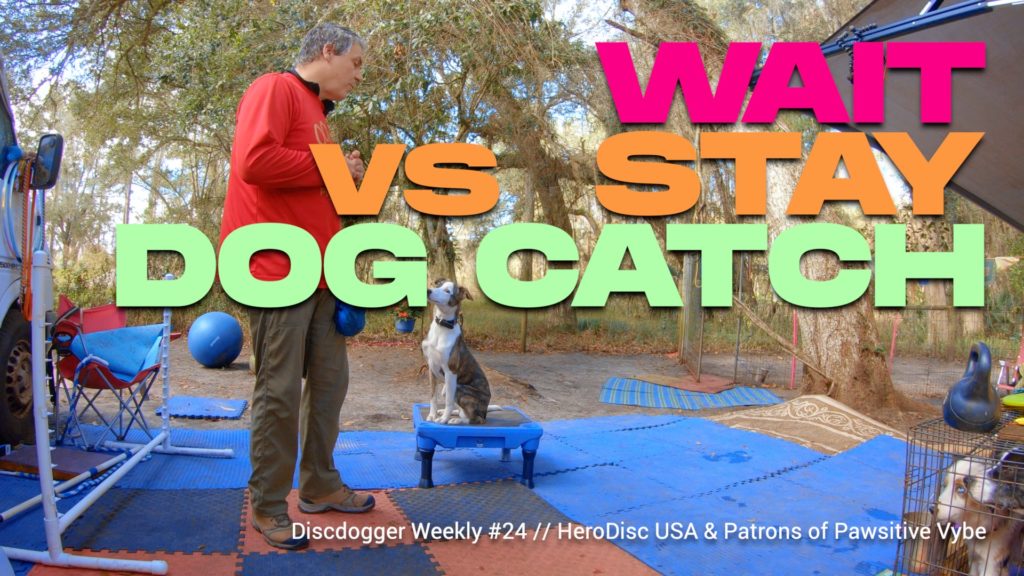
Puppy Dog Catch and Wait Foundation with Grasshopper
Ron & Grasshopper work on a Dog Catch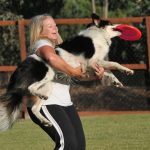 A Dog Catch is a great trick to use for hitting the crowd or for putting a strategic pause in your routine. The dog leaps to catch the disc and then you catch... More, Pedestal, and Wait
A Dog Catch is a great trick to use for hitting the crowd or for putting a strategic pause in your routine. The dog leaps to catch the disc and then you catch... More, Pedestal, and Wait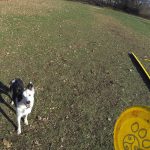 Waiting on cue and situationally is extremely important for disc dog freestyle training. The competition field might not see too much waiting going on as everything is supposed to be happening in flow,... More vs Stay in this training session featured in DiscDogger Weekly #24. Getting a Dog Catch is a good thing, but getting a Dog Catch while clearly communicating Wait vs Stay and installing a trigger for the Dog Catch is elegant and efficient and the way that we like to do things at Pawsitive Vybe.
Waiting on cue and situationally is extremely important for disc dog freestyle training. The competition field might not see too much waiting going on as everything is supposed to be happening in flow,... More vs Stay in this training session featured in DiscDogger Weekly #24. Getting a Dog Catch is a good thing, but getting a Dog Catch while clearly communicating Wait vs Stay and installing a trigger for the Dog Catch is elegant and efficient and the way that we like to do things at Pawsitive Vybe.
The Difference Between Wait and Stay
There is a critical difference between Wait and Stay and most dog trainers can’t clearly discriminate between the two. This critical distinction has great bearing on disc dog and dog sports training and is also quite important for general dog training. In my opinion, it is one of the biggest problems in dog sports.
About 10 years ago I recognized this difference and started to develop an elegant training solution to it using a pedestal Spot is a “go to a place”, or “go to a mat” behavior. This means that the dog seeks out and performs a duration behavior on a spot of the handler’s choosing. A... More and the Stall
Spot is a “go to a place”, or “go to a mat” behavior. This means that the dog seeks out and performs a duration behavior on a spot of the handler’s choosing. A... More and the Stall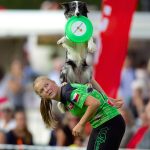 A Stall has the dog leaping up and chilling out on the handler’s back. Stalls are great for showmanship and for presenting a dog to the crowd. They create a dramatic or emotive... More behavior. This solution is what Grasshopper and I are doing in this session although we’re doing it with a Dog Catch.
A Stall has the dog leaping up and chilling out on the handler’s back. Stalls are great for showmanship and for presenting a dog to the crowd. They create a dramatic or emotive... More behavior. This solution is what Grasshopper and I are doing in this session although we’re doing it with a Dog Catch.
So what is the difference between a Wait and a Stay?
I’ve asked many trainers this question over the years and never once received a clear answer to it until a year or two ago. Normally I would get a blank stare or furrowed eyebrows as trainers tried to come up with a clear distinction between the two. Sometimes I would get some kind of answer but that answer rarely held up to a logical distinction.
A Wait releases to a conditioned response. This means that a Wait ends when the dog receives the message that it is time to do something that he or she has been trained to do or to the appropriate action for the situation. This is a very open ended criteria and is a key behavior in many dog sports, less so in general dog training, but it’s still important.
A Stay releases to the Release Cue. Your Release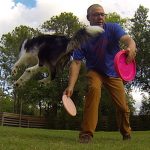 Release has many meanings in disc. Throws and throw variations can be referred to as releases. Sometimes you talk about the dog releasing something, the toy, or the environment, as in to stop... More Cue is what you use to tell your dog to stop doing a duration behavior. A Release Cue is used to tell your dog to stop lying down. Or to stand up from a Sit.
Release has many meanings in disc. Throws and throw variations can be referred to as releases. Sometimes you talk about the dog releasing something, the toy, or the environment, as in to stop... More Cue is what you use to tell your dog to stop doing a duration behavior. A Release Cue is used to tell your dog to stop lying down. Or to stand up from a Sit.
Duration Behaviors, aka: Stays, are defined by the Release cue. It is the release cue that tells the dog to stop doing them and it is the release cue that tells the dog the behavior was a Stay. Waits have no such definition. The dog simply waits until it is time to do the thing. If you don’t release your dog with your Release Cue, then that behavior or rep of that behavior was a Wait and was performed correctly.
Why This Distinction Matters
This distinction is extremely important for the dog’s understanding. If the dog (or the handler) doesn’t know the difference between a Wait and a Stay then the dog cannot be confident when engaging from the Wait. Sharp, crisp and confident starts and leaps into action will not be possible as the dog questions whether or not this is a Wait or a Stay.
The dog will also have a weak, unconfident Stay as they make mistakes by breaking the Stay when they leap into action thinking it is time to do the thing. This lack of confident performance leads to all kinds of trouble in dog sports.
Is your start line stay a Wait or a Stay? How about your contact behavior? What about your vault set up? Front Front is a stable position directly in front of the handler. Front is an traditional obedience skill. Usually your dog sits in this position, but standing is often acceptable as well, especially in... More position? Heel? Basic Standing PositionStanding in front of the dog with the disc held vertically in the throwing hand is Basic Standing Position (BSP), a foundational position in the Yachi Method. More?
Front is a stable position directly in front of the handler. Front is an traditional obedience skill. Usually your dog sits in this position, but standing is often acceptable as well, especially in... More position? Heel? Basic Standing PositionStanding in front of the dog with the disc held vertically in the throwing hand is Basic Standing Position (BSP), a foundational position in the Yachi Method. More?
Hopefully you can see that there’s trouble in having an unclear distinction between Wait and Stay and you take some time to sort it out. It really is a critical issue with all dog sport training. Your dog will thank you.
Compare and Contrast: Wait vs Stay
Compare and contrast is an excellent piece of learning theory. You put this next to that and compare the two. This allows the learner to simultaneously get the similarities as well as the differences.
If you don’t put them next to each other then it is hard to see the difference between similar things and hard to see the similarities. By putting them next to each other you get a chance to do both at the same time.
In this lesson with Grasshopper I’m using a Wait to set up for the Dog Catch and I’m using the Stall (Stay on the Pedestal) to reinforce a good solid Wait.
The Wait releases into a conditioned response, the Dog Catch, and the Dog Catch is a duration behavior as the dog has to stay in my arms until I give the Release Cue.
This whole session alternates between Wait and Stay with some randomization. Grasshopper is not just learning to Dog Catch but is also learning that the Release Cue,”Off,” is the end of the Dog Catch and the Stall cue ends in,”Off.” The Wait releases to the conditioned response that is the Dog Catch.
There are both remarkable similarities and remarkable differences between Wait and Stall, and Grasshopper is getting a real good feel for and understanding of them both. This understanding will be generalized in all of our training and it won’t take long for him to clearly and confidently distinguish between the two.





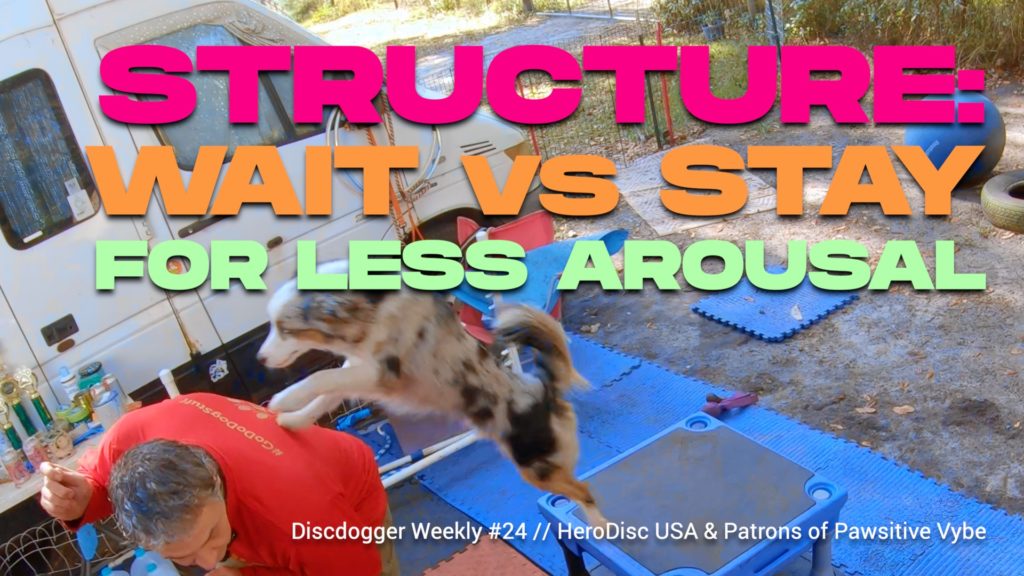
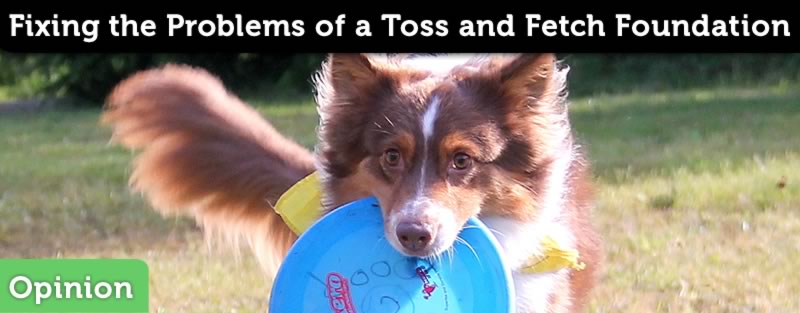

Responses